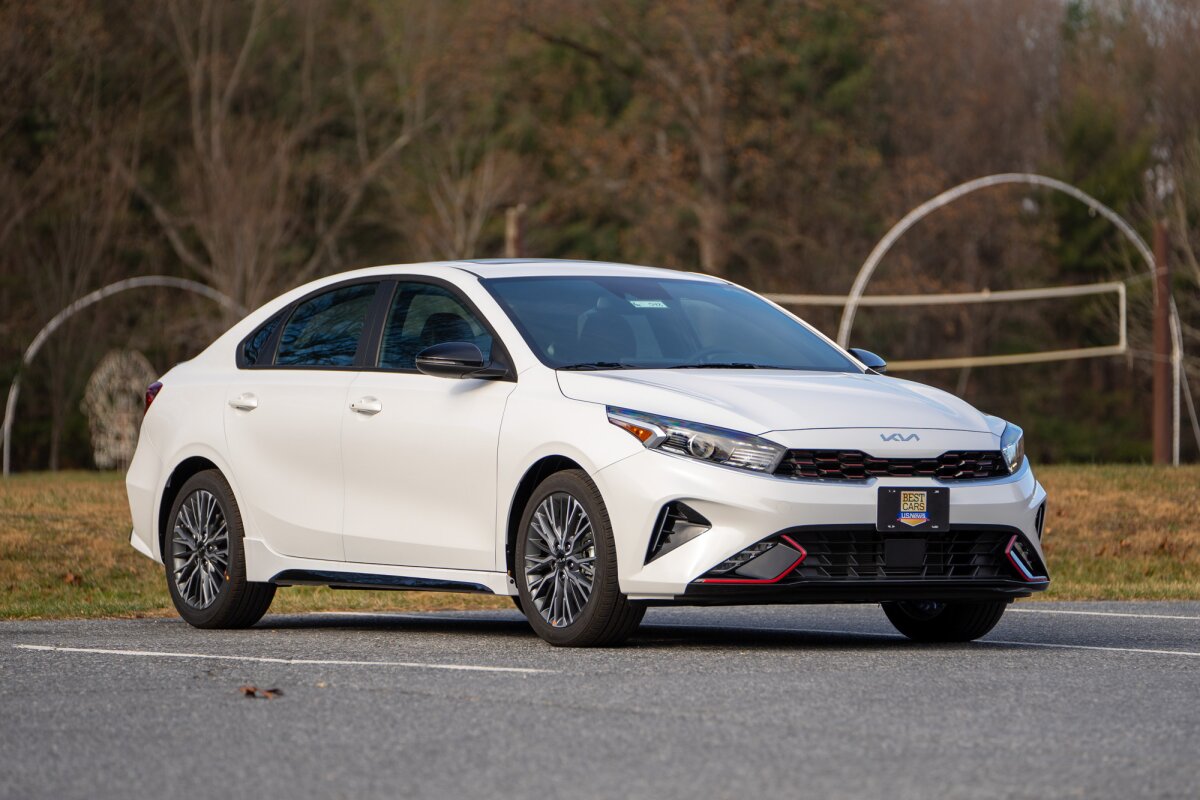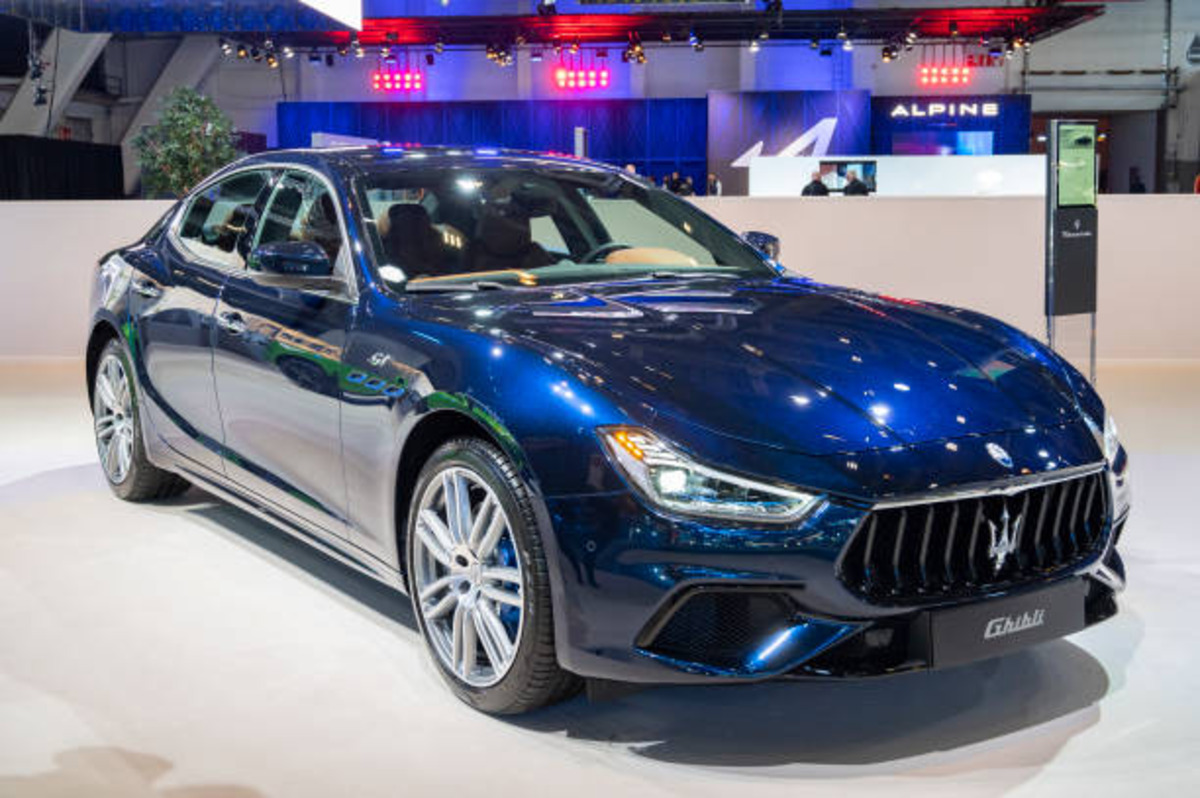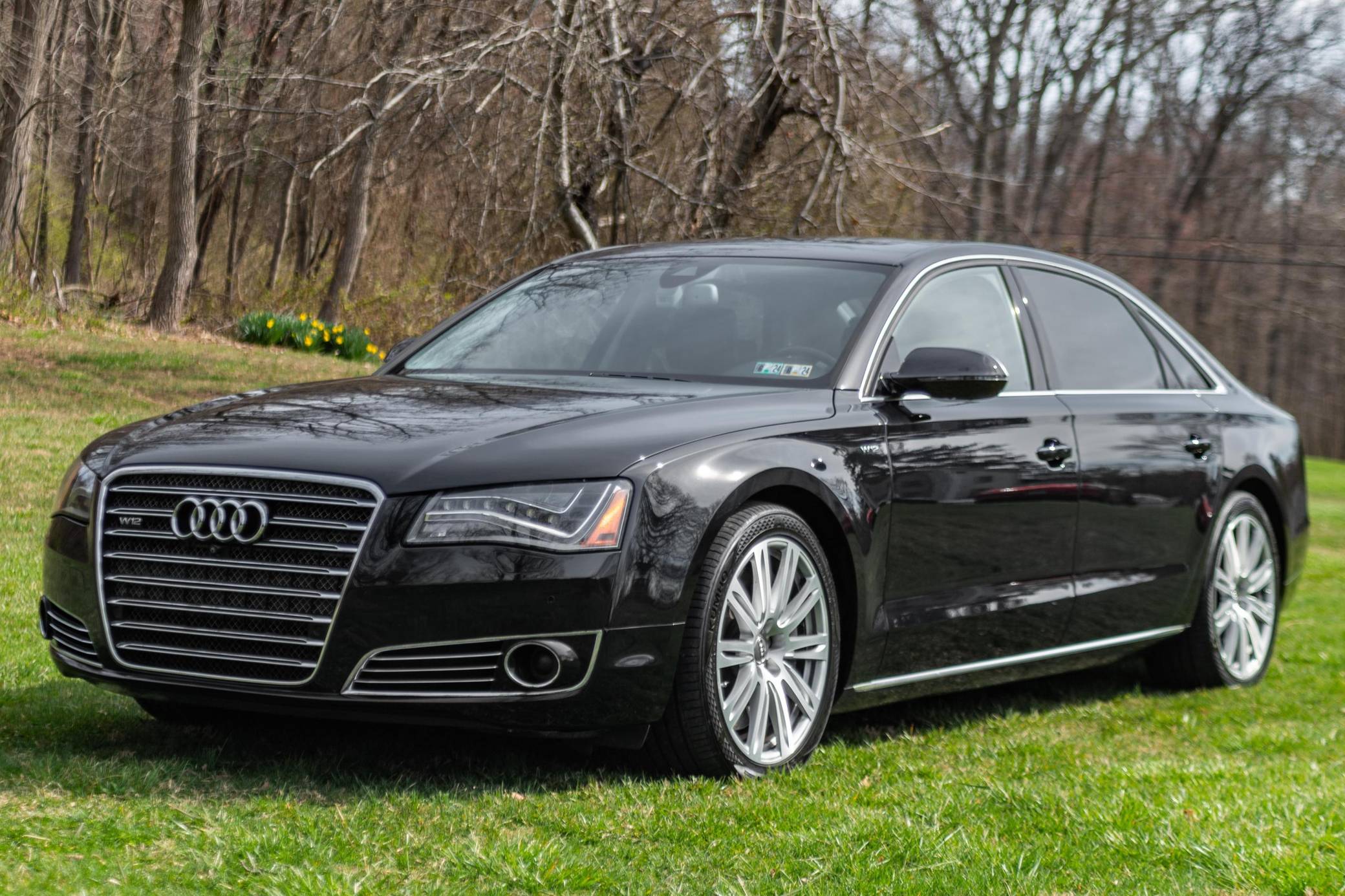Choosing the right vehicle is one of the most significant financial decisions you’ll make, with implications that extend far beyond the initial purchase price.
The automotive market presents a fascinating dichotomy between vehicles that serve as practical, economical transportation solutions and those that can quickly drain your finances through excessive costs, poor reliability, and steep depreciation.
Budget-friendly vehicles excel in several key areas: they offer reliable performance, maintain reasonable maintenance costs, hold their value well, and provide excellent fuel efficiency.
These vehicles are engineered with practicality in mind, featuring proven powertrains, readily available parts, and straightforward designs that minimize repair complexity.
They represent smart financial choices that allow owners to allocate their resources toward other life priorities while still enjoying dependable transportation.
Conversely, budget-busting vehicles often combine multiple financial pitfalls. They may feature complex, failure-prone systems that require expensive repairs, depreciate rapidly due to poor reliability reputations, or demand premium fuel and specialized maintenance.
These vehicles might appear attractive initially but can quickly become financial burdens through unexpected repair bills, poor resale values, and ongoing operational costs.
Understanding these distinctions empowers consumers to make informed decisions that align with their financial goals and lifestyle needs, ensuring their vehicle choice enhances rather than hinders their overall financial well-being.
5 Vehicles That Won’t Ruin Your Budget
These exceptionally economical vehicles feature robust engineering and affordable parts availability that minimize total ownership costs through reliable operation and reasonable maintenance requirements that protect your financial well-being throughout extended ownership periods.
Their thoughtful design philosophy prioritizes simplicity and durability over complexity, utilizing proven components and accessible service points that enable cost-effective repairs while avoiding the expensive specialty tools and procedures required by premium vehicles.
From extended service intervals that reduce routine maintenance frequency to readily available aftermarket parts that provide affordable repair options, these budget-friendly vehicles continue operating reliably without creating financial hardship.
Owners consistently report total annual costs below $1,500 with these dependable vehicles including maintenance, repairs, and depreciation proving that reliable transportation doesn’t require sacrificing financial stability or accepting poverty-inducing ownership expenses throughout their service lives.
1. Toyota Corolla
The Toyota Corolla stands as the epitome of automotive reliability and financial responsibility, representing decades of refined engineering focused on delivering dependable, economical transportation.
This compact sedan has earned its reputation through consistent performance, exceptional build quality, and remarkably low total cost of ownership, which makes it an ideal choice for budget-conscious consumers.
At the heart of the Corolla’s appeal lies its bulletproof reliability. Toyota’s engineering philosophy emphasizes proven technologies over cutting-edge innovations that might compromise long-term dependability.
The Corolla’s naturally aspirated four-cylinder engines are renowned for their longevity, with many examples easily surpassing 200,000 miles with proper maintenance.
This reliability translates directly into lower ownership costs, as owners rarely face unexpected repair bills or extended periods without transportation.
Maintenance costs remain refreshingly reasonable throughout the Corolla’s lifespan. Routine services like oil changes, brake pad replacements, and tire rotations can be performed at virtually any service center, keeping labor costs competitive.
Parts availability is excellent worldwide, and the straightforward design means repairs rarely require specialized tools or extensive diagnostic procedures. The Corolla’s maintenance schedule is also forgiving, with longer intervals between major services compared to many competitors.

Fuel efficiency represents another significant advantage, with most Corolla variants achieving excellent gas mileage that helps offset rising fuel costs.
The aerodynamic design and efficient powertrains work together to deliver impressive real-world fuel economy, making daily commuting and long-distance travel more affordable.
The hybrid variant takes this efficiency even further, offering exceptional fuel economy for minimal additional cost. Depreciation characteristics favor the Corolla significantly.
Toyota’s reputation for reliability creates strong demand in the used car market, helping these vehicles retain their value better than most competitors. This strong resale value protects owners’ investments and makes upgrading to newer models more financially feasible when the time comes.
The Corolla’s interior prioritizes functionality over luxury, but this approach serves budget-conscious buyers well. Controls are intuitive and durable, reducing the likelihood of expensive electronic failures.
The spacious cabin accommodates passengers comfortably while offering practical storage solutions for daily needs. Safety ratings consistently rank among the best in class, providing peace of mind without premium costs.
Toyota Safety Sense 2.0 comes standard across the lineup, offering advanced safety features that were once exclusive to luxury vehicles. This comprehensive safety package adds significant value without inflating the purchase price substantially.
Insurance costs typically remain moderate due to the Corolla’s excellent safety record and relatively low theft rates. The combination of reasonable purchase prices, low repair costs, and modest insurance premiums creates a favorable insurance profile that further reduces total ownership expenses.
2. Honda Civic
The Honda Civic represents the perfect balance of practicality, reliability, and driving enjoyment, delivering exceptional value for budget-minded consumers who refuse to compromise on quality or performance.
This compact car has evolved through multiple generations while maintaining its core promise of dependable, efficient transportation that won’t break the bank.
Honda’s engineering excellence shines through in the Civic’s refined powertrains, which offer impressive fuel economy without sacrificing performance.
The naturally aspirated and turbocharged four-cylinder engines provide adequate power for most driving situations while maintaining excellent efficiency ratings.
The continuously variable transmission (CVT) in most models optimizes fuel consumption while providing smooth, responsive acceleration. Build quality remains consistently high across all trim levels, with tight panel gaps, solid construction, and materials that age gracefully.
The Civic’s structural integrity and attention to detail rival vehicles costing significantly more, providing luxury-level refinement at mainstream prices. This quality construction translates into fewer squeaks, rattles, and premature wear issues that can plague lesser vehicles.
Maintenance requirements follow Honda’s traditionally reasonable approach, with service intervals that respect owners’ time and budgets. The Civic’s design philosophy emphasizes accessibility, making routine maintenance tasks straightforward for both professional technicians and capable DIY enthusiasts. Parts costs remain competitive due to Honda’s extensive dealer network and robust aftermarket support.

The Civic’s interior design showcases Honda’s commitment to practicality and user-friendly interfaces. Controls are logically arranged and built to withstand years of daily use without premature failure.
The cabin offers impressive space efficiency, with clever storage solutions and seating configurations that maximize utility within the compact footprint. Technology integration strikes an excellent balance between useful features and unnecessary complexity.
The infotainment systems provide essential connectivity and entertainment options without overwhelming users with excessive menus or failure-prone components. This thoughtful approach reduces long-term ownership costs while maintaining modern convenience features.
Resale values consistently rank among the best in the compact car segment, reflecting the Civic’s reputation for longevity and continued desirability. This strong residual value protects owners’ investments and makes the Civic an excellent choice for buyers who plan to trade up in the future.
Safety performance has always been a Civic priority, with the Honda Sensing suite of active safety technologies coming standard across the lineup. These advanced features provide significant protection without the premium pricing typically associated with such comprehensive safety systems.
The Civic’s versatility extends beyond basic transportation, with performance-oriented Si and Type R variants available for enthusiasts who want more excitement without abandoning reliability. This range of options ensures there’s a Civic configuration suitable for virtually any budget or driving preference.
3. Nissan Versa
The Nissan Versa emerges as an exceptional value proposition in the subcompact sedan segment, offering remarkable affordability without sacrificing essential features or reliability.
This often-overlooked vehicle provides an attractive entry point into new car ownership while delivering practical benefits that extend well beyond its modest purchase price. Affordability represents the Versa’s most compelling attribute, with one of the lowest starting prices in the new car market.
This accessibility makes new car ownership possible for buyers who might otherwise be forced into the used car market, providing the benefits of full warranty coverage, known maintenance history, and the latest safety features at a surprisingly reasonable cost.
Despite its budget-friendly positioning, the Versa doesn’t feel cheap or compromised in daily use. The interior offers generous space for passengers and cargo, with thoughtful design touches that maximize utility within the compact dimensions.
Rear seat legroom particularly impresses, providing comfortable accommodation for adult passengers that rivals much larger vehicles. The naturally aspirated four-cylinder engine provides adequate performance for most driving situations while delivering excellent fuel economy.
The continuously variable transmission optimizes efficiency and provides smooth power delivery, though it may lack the engagement preferred by driving enthusiasts. For daily commuting and urban driving, the powertrain proves perfectly adequate while keeping fuel costs minimal.

Reliability has improved significantly in recent generations, with Nissan addressing many of the concerns that affected earlier models. The simplified design and proven components reduce the likelihood of expensive failures while keeping maintenance requirements straightforward and affordable.
Parts availability and service support have also improved as Nissan has expanded its focus on this segment. Standard features include many items that were once considered luxury options, such as automatic emergency braking, blind-spot monitoring, and smartphone integration.
This comprehensive equipment list adds significant value and helps justify the Versa’s position as a smart financial choice rather than simply the cheapest option available.
The Versa’s depreciation curve, while not as favorable as some competitors, remains reasonable within the subcompact segment. The low initial purchase price provides a buffer against depreciation losses, and the practical benefits ensure continued demand in the used car market.
Maintenance costs remain competitive throughout the ownership experience, with Nissan’s extensive dealer network providing convenient service options.
The straightforward design minimizes diagnostic complexity and reduces labor times for routine services, helping keep ownership costs predictable and manageable.
Insurance costs typically rank among the lowest in the automotive market due to the Versa’s modest performance capabilities, excellent safety ratings, and low theft desirability.
This favorable insurance profile further reduces total ownership costs and makes the Versa particularly attractive for young drivers or those seeking to minimize ongoing expenses.
4. Hyundai Elantra
The Hyundai Elantra represents remarkable value engineering and corporate transformation, showcasing how aggressive warranties and competitive pricing can create exceptional opportunities for budget-conscious buyers.
This compact sedan delivers impressive refinement, comprehensive feature content, and peace of mind that rivals vehicles costing significantly more. Hyundai’s industry-leading warranty coverage stands as the Elantra’s most compelling financial advantage.
The 10-year, 100,000-mile powertrain warranty and 5-year, 60,000-mile comprehensive coverage provide unprecedented protection against unexpected repair costs.
This warranty coverage essentially eliminates major repair concerns during the most critical ownership years, making the Elantra a low-risk purchase for budget-minded consumers.
Build quality has improved dramatically over the past decade, with the Elantra showcasing Hyundai’s commitment to competing with established segment leaders.
Materials quality, fit and finish, and overall refinement levels now rival offerings from Honda and Toyota while maintaining more aggressive pricing. This quality improvement has translated into better reliability ratings and improved owner satisfaction scores.
The Elantra’s powertrain options provide an excellent variety for different driving preferences and budgets. The naturally aspirated base engine delivers adequate performance with excellent fuel efficiency, while the available turbocharged engine provides surprising performance for those wanting more excitement. Both engines pair with well-calibrated transmissions that prioritize smoothness and efficiency.

Interior design and feature content often exceed expectations given the Elantra’s competitive pricing. The cabin offers generous space, quality materials, and thoughtful ergonomics that create a premium atmosphere.
Standard features frequently include items that are optional or unavailable on competitors, such as heated seats, premium audio systems, and advanced driver assistance technologies.
Technology integration has become a particular strength, with intuitive infotainment systems that provide comprehensive connectivity without overwhelming complexity.
The user interface design prioritizes ease of use while providing modern convenience features that enhance the ownership experience without creating potential failure points.
Fuel efficiency ranks among the best in class across all engine options, helping offset rising fuel costs and reducing overall transportation expenses.
The aerodynamic design and efficient powertrains work together to deliver impressive real-world fuel economy that makes daily commuting and long-distance travel more affordable.
Depreciation characteristics have improved significantly as Hyundai’s reputation has strengthened. While not quite matching the residual values of segment leaders, the Elantra’s strong initial value proposition helps offset depreciation concerns.
The comprehensive warranty coverage also provides confidence for used car buyers, supporting resale values. Safety performance has become a major selling point, with the Elantra earning top ratings from major testing organizations.
Standard safety features often exceed what competitors offer, providing comprehensive protection without premium pricing. This safety focus reduces insurance costs while providing peace of mind for families.
Also Read: 5 Cabin Air Filters Placed For Easy Access And 5 That Require Disassembly
5. Kia Forte
The Kia Forte completes our budget-friendly recommendations by demonstrating how thoughtful engineering and aggressive pricing can create exceptional value propositions.
This compact sedan offers reliability, comprehensive warranties, and practical benefits that make it an intelligent choice for cost-conscious consumers who refuse to compromise on quality or features.
Kia’s remarkable warranty coverage matches Hyundai’s industry-leading protection, providing 10-year, 100,000-mile powertrain coverage and 5-year, 60,000-mile comprehensive protection.
This extensive warranty coverage virtually eliminates major repair concerns during the critical early ownership years, making the Forte a low-risk investment for budget-minded buyers.
The Forte’s reliability has improved dramatically as Kia has refined its manufacturing processes and engineering approaches. Modern Forte models showcase the benefits of Kia’s partnership with Hyundai, incorporating proven technologies and build quality improvements that rival established segment leaders.
This reliability improvement has translated into better owner satisfaction and reduced total ownership costs. Powertrain options provide excellent variety for different needs and preferences.
The naturally aspirated four-cylinder engine delivers adequate performance with impressive fuel efficiency, while the available turbocharged engine provides surprising power and responsiveness.
Both engines pair with well-tuned transmissions that prioritize smoothness and efficiency over sporting characteristics. Interior space and feature content often surprise buyers with their generosity given the Forte’s competitive pricing. The cabin provides comfortable seating for four adults and practical cargo space for daily needs.

Material quality and build construction have improved significantly, creating an atmosphere that feels more expensive than the price would suggest.
Standard equipment levels frequently exceed competitor offerings, with features like heated seats, premium audio systems, and advanced safety technologies included at no additional cost.
This comprehensive equipment list adds significant value and helps justify the Forte’s position as a smart financial choice rather than simply an inexpensive option.
Technology integration has become increasingly sophisticated, with user-friendly infotainment systems that provide modern connectivity and convenience features.
The interface design prioritizes intuitive operation while avoiding unnecessary complexity that could create long-term reliability concerns. Fuel efficiency ranks competitively within the compact sedan segment, with EPA ratings that translate into real-world economy for daily commuting and highway travel.
The efficient powertrains and aerodynamic design work together to minimize fuel consumption without sacrificing performance adequacy. Maintenance costs remain reasonable throughout the ownership experience, with Kia’s expanding dealer network providing convenient service options.
Parts availability has improved significantly, and the straightforward design minimizes diagnostic complexity for routine services. Resale values continue improving as Kia’s reputation strengthens in the marketplace.
While not quite matching the residual values of segment leaders, the Forte’s strong initial value proposition and comprehensive warranty coverage help support used car values and provide confidence for future buyers.
5 Vehicles That Ruin Your Budget
These financially devastating vehicles feature overcomplicated engineering and expensive proprietary components that create excessive ownership costs through frequent failures and specialized repair requirements that can destroy household budgets and create long-term financial hardship.
Their complex systems demand costly maintenance procedures and utilize expensive synthetic fluids while requiring specialized diagnostic equipment and factory-trained technicians that dramatically inflate repair costs beyond reasonable expectations for vehicle ownership.
From shortened service intervals that increase maintenance frequency to fragile components that fail catastrophically without warning, these money-pit vehicles create unexpected repair bills that can exceed annual income for many families.
Owners frequently report total annual costs exceeding $4,000 with these unreliable vehicles devastating expenses that force many into debt or bankruptcy while dealing with constant breakdowns and repair shop visits that disrupt daily life.
1. BMW 7 Series
The BMW 7 Series represents the pinnacle of luxury sedan engineering, but this technological showcase comes with financial implications that can quickly overwhelm unprepared owners.
While delivering unmatched comfort, performance, and prestige, the 7 Series demands a level of financial commitment that extends far beyond its substantial purchase price.
Initial depreciation strikes immediately and severely, with new 7 Series models typically losing 20-30% of their value within the first year alone. This depreciation continues aggressively throughout the early ownership years, making the 7 Series one of the worst automotive investments from a pure financial perspective.
The combination of high initial prices and rapid value loss creates substantial financial losses that can exceed the purchase price of entire economy cars.
Maintenance costs escalate quickly due to the 7 Series’ sophisticated engineering and premium component specifications. Routine services that might cost $100-200 on mainstream vehicles can easily exceed $500-800 on the 7 Series due to specialized fluids, premium parts, and extended labor times.
The complex systems require specialized diagnostic equipment and factory-trained technicians, limiting service options to expensive BMW dealerships or equally costly independent specialists. Reliability concerns plague the 7 Series throughout its lifespan, with multiple complex systems prone to expensive failures.
The air suspension systems, electronic modules, and advanced drivetrain components frequently require replacement or repair at costs that can reach $5,000-10,000 per incident. These failures often occur outside warranty coverage, leaving owners facing substantial unexpected expenses.

Parts costs reflect the vehicle’s luxury positioning, with even basic components carrying premium pricing. Brake pads, filters, and other consumables cost multiples of equivalent parts for mainstream vehicles, while major components like electronic modules or suspension components can cost more than entire economy cars.
Insurance premiums reflect the 7 Series’ high value, expensive repair costs, and theft desirability. Annual insurance costs can exceed $3,000-5,000 for comprehensive coverage, particularly for younger drivers or those with less-than-perfect driving records.
The combination of high premiums and expensive repairs creates substantial ongoing costs that persist throughout ownership. Fuel consumption remains relatively high despite advanced engine technologies, particularly in the powerful V8 and V12 variants.
Premium fuel requirements add additional ongoing costs, with the 7 Series typically requiring 91+ octane gasoline that costs $0.20-0.40 more per gallon than regular unleaded.
Extended warranty options become almost mandatory for the 7 Series, but these warranties come with substantial costs and exclusions that limit their effectiveness.
Even with extended coverage, owners often face significant out-of-pocket expenses for repairs and maintenance that fall outside warranty parameters.
The 7 Series’ technological complexity creates long-term obsolescence concerns, with advanced features becoming outdated or unsupported as newer models arrive.
This technological evolution can render expensive options worthless and create compatibility issues that require expensive updates or replacements.
Financing costs remain high due to the substantial purchase prices and poor residual values, with monthly payments that can exceed many people’s entire transportation budgets.
Lease options provide some relief but come with strict mileage restrictions and potential excessive wear charges that can create unexpected costs at lease termination.
2. Range Rover
The Range Rover epitomizes luxury SUV engineering and off-road capability, but this British icon has earned an equally impressive reputation for devastating ownership costs that can quickly overwhelm even affluent buyers.
While delivering unmatched prestige and capability, the Range Rover demands financial sacrifices that extend throughout the ownership experience.
Reliability issues have plagued Range Rover models for decades, with complex electronic systems, air suspension components, and engine problems creating frequent and expensive service visits.
Common failures include air suspension compressors, electronic control modules, transmission problems, and various electrical gremlins that can cost thousands to diagnose and repair. These issues often occur repeatedly, creating ongoing expenses that make budgeting nearly impossible.
Depreciation strikes particularly hard due to the Range Rover’s poor reliability reputation and high maintenance costs. New models can lose 40-50% of their value within three years, creating massive financial losses that exceed the purchase price of many mainstream vehicles.
This depreciation continues throughout the ownership cycle, making Range Rovers poor investments from any financial perspective. Parts costs reflect both the vehicle’s luxury positioning and British engineering complexity.
Simple components like brake pads or air filters can cost multiples of equivalent parts for mainstream SUVs, while major components like air suspension systems or electronic modules can cost $10,000-20,000 to replace.
Parts availability can also be problematic, with some components requiring special orders that create extended downtime. Maintenance requirements demand specialized knowledge and equipment that limit service options to expensive dealerships or equally costly specialists.
Routine services that might cost $200-300 on mainstream SUVs can easily exceed $800-1,200 on Range Rovers due to complex procedures, premium fluids, and extended diagnostic times.

Insurance costs reflect the Range Rover’s high theft desirability, expensive repair costs, and poor reliability record. Annual premiums can exceed $4,000-6,000 for comprehensive coverage, particularly in urban areas where theft rates remain high.
The combination of high premiums and frequent claims creates ongoing expenses that persist throughout ownership. Fuel consumption remains substantial despite advanced engine technologies, with most Range Rover models achieving fuel economy ratings that pale compared to modern competitors.
Premium fuel requirements add additional costs, particularly for the supercharged engines that demand 91+ octane gasoline. The Range Rover’s complex air suspension system creates particular financial challenges, with compressors, air springs, and control modules prone to failure.
Replacement costs can exceed $5,000-8,000 per incident, and these failures often occur multiple times during ownership. Converting to conventional springs eliminates some reliability concerns but compromises the vehicle’s signature ride quality and off-road capability.
Electronic systems complexity creates long-term obsolescence concerns, with advanced features becoming outdated or unsupported as technology evolves. Updating or replacing these systems can require substantial investments that provide little return on investment.
Extended warranty coverage becomes essential for Range Rover ownership, but even comprehensive warranties often exclude common failure points or limit coverage amounts. Owners frequently face substantial out-of-pocket expenses even with warranty protection, making budgeting extremely difficult.
3. Maserati Ghibli
The Maserati Ghibli represents Italian luxury and performance in an accessible package, but this exotic sedan hides ownership costs that can quickly overwhelm buyers attracted by its relatively modest purchase price compared to other luxury European sedans.
The Ghibli’s combination of complexity, questionable reliability, and premium service requirements creates a perfect storm of unexpected expenses.
Reliability concerns begin immediately and persist throughout ownership, with the Ghibli suffering from numerous quality control issues and engineering problems. Common failures include electrical system malfunctions, transmission problems, engine oil leaks, and various component failures that occur with alarming frequency.
These issues often require multiple service visits to diagnose and repair, creating ongoing expenses and frustration. Depreciation strikes particularly hard due to Maserati’s limited brand recognition and poor reliability reputation.
New Ghibli models can lose 50-60% of their value within three years, creating massive financial losses that make leasing almost mandatory for new buyers. This steep depreciation continues throughout the ownership cycle, making the Ghibli one of the worst automotive investments available.
Service requirements demand specialized Maserati dealerships or certified specialists, severely limiting service options and driving up costs. Routine maintenance that might cost $300-400 on German luxury sedans can easily exceed $800-1,200 on the Ghibli due to specialized procedures, premium fluids, and extended diagnostic times. Major repairs can cost $5,000-15,000 per incident.
Parts availability creates additional challenges, with many components requiring special orders from Italy that can create weeks of downtime. Parts costs reflect both the vehicle’s exotic positioning and limited production volumes, with even basic components costing multiples of equivalent parts for mainstream luxury vehicles.

The Ghibli’s complex drivetrain systems create particular reliability concerns, with the turbocharged engines prone to various failures and the transmission systems requiring expensive maintenance procedures.
These powertrains demand premium fluids and frequent service intervals that add substantial ongoing costs. Insurance premiums reflect the Ghibli’s high repair costs, limited parts availability, and theft desirability.
Annual premiums can exceed $3,000-4,000 for comprehensive coverage, particularly for younger drivers or those with imperfect driving records. The combination of high premiums and expensive repairs creates substantial ongoing expenses.
Fuel consumption remains higher than competitors despite advanced engine technologies, with the performance-oriented engines requiring premium fuel that adds ongoing costs. The Ghibli’s relatively poor fuel efficiency creates additional expenses that compound other ownership costs.
Extended warranty coverage becomes essential but comes with substantial costs and limitations that reduce its effectiveness. Many common failure points fall outside warranty coverage, leaving owners facing unexpected expenses even with extended protection.
Ghibli’s limited dealer network creates service accessibility problems, particularly for owners outside major metropolitan areas. This limited availability can create extended downtime and additional costs for transportation and lodging during extended service visits.
Technology integration has proven problematic, with the infotainment and electronic systems prone to failures and compatibility issues. Updating or replacing these systems can require substantial investments while providing limited improvement in functionality or reliability.
4. Jaguar XF
The Jaguar XF showcases British luxury engineering and distinctive styling, but this elegant sedan harbors ownership costs that can quickly transform initial attraction into financial regret.
While delivering impressive performance and luxury amenities, the XF’s combination of reliability issues, expensive maintenance, and poor resale values creates a challenging ownership proposition.
Reliability problems have consistently plagued XF models across multiple generations, with electrical system failures, transmission problems, and various component malfunctions occurring with disappointing frequency.
These issues often require multiple service visits to diagnose and repair, creating ongoing expenses that make budgeting extremely difficult. Common problems include electronic module failures, transmission issues, and various electrical gremlins that can cost thousands to resolve.
Depreciation strikes particularly hard due to Jaguar’s inconsistent reliability reputation and relatively limited brand appeal. New XF models typically lose 45-55% of their value within three years, creating substantial financial losses that exceed the purchase price of many mainstream vehicles.
This steep depreciation continues throughout ownership, making the XF a poor investment from any financial perspective. Maintenance costs escalate quickly due to the XF’s sophisticated engineering and premium component requirements.
Routine services that might cost $400-500 on German competitors can easily exceed $800-1,200 on the XF due to complex procedures, specialized fluids, and extended labor times.
The complex systems require specialized diagnostic equipment and factory-trained technicians, limiting service options to expensive Jaguar dealerships. Parts costs reflect the vehicle’s luxury positioning and British engineering complexity, with even basic components carrying premium pricing.
Brake components, filters, and other consumables cost significantly more than equivalent parts for mainstream luxury vehicles, while major components like electronic modules or drivetrain components can cost more than entire economy cars.

The XF’s sophisticated electronic systems create particular challenges, with multiple control modules prone to failure and expensive replacement. These electronic failures often create cascading problems that require extensive diagnosis and multiple repair attempts, driving up costs and creating extended downtime.
Insurance premiums reflect the XF’s high repair costs, expensive parts, and theft desirability. Annual insurance costs can exceed $3,000-4,000 for comprehensive coverage, particularly for performance-oriented variants or younger drivers.
The combination of high premiums and expensive repairs creates substantial ongoing expenses. Service accessibility can be problematic due to Jaguar’s limited dealer network, particularly for owners outside major metropolitan areas.
This limited availability can create extended downtime and additional costs for transportation during service visits, adding to the overall ownership burden.
Fuel consumption remains relatively high despite advanced engine technologies, particularly in the supercharged variants that require premium fuel. The combination of poor fuel efficiency and premium fuel requirements creates ongoing expenses that compound other ownership costs.
Extended warranty coverage becomes almost mandatory for XF ownership, but these warranties come with substantial costs and exclusions that limit their effectiveness. Many common failure points fall outside warranty coverage, leaving owners facing unexpected expenses even with extended protection.
The XF’s complex air suspension and electronic systems create long-term obsolescence concerns, with advanced features becoming outdated or unsupported as technology evolves. Updating these systems can require substantial investments that provide little return on investment.
5. Audi A8
The Audi A8 represents German engineering excellence and technological innovation, but this flagship luxury sedan demands a level of financial commitment that can quickly overwhelm owners unprepared for its comprehensive ownership costs.
While delivering exceptional refinement and advanced features, the A8’s sophisticated engineering creates ongoing expenses that persist throughout ownership.
Maintenance costs escalate immediately due to the A8’s complex engineering and premium component specifications. Routine services that might cost $200-300 on mainstream vehicles can easily exceed $600-1,000 on the A8 due to specialized fluids, premium parts, and extended labor requirements.
The sophisticated systems require specialized diagnostic equipment and factory-trained technicians, limiting service options to expensive Audi dealerships or equally costly specialists.
Reliability concerns affect multiple systems throughout the A8’s lifespan, with the air suspension, electronic modules, and complex drivetrain components prone to expensive failures.
The air suspension system alone can require $5,000-8,000 in repairs when components fail, and these failures often occur multiple times during ownership.
Electronic control modules can cost $3,000-5,000 to replace, and various electrical problems can create ongoing diagnostic challenges. Depreciation strikes severely due to the A8’s high initial cost and complex systems that create long-term reliability concerns.
New models can lose 35-45% of their value within three years, creating substantial financial losses that exceed many people’s annual incomes. This depreciation continues throughout ownership, making the A8 a poor investment from any financial perspective. Parts costs reflect both the vehicle’s luxury positioning and German engineering complexity.
Even basic components like brake pads or air filters cost multiples of equivalent parts for mainstream vehicles, while major components like electronic modules or suspension systems can cost more than entire economy cars. Parts availability is generally good but comes at premium pricing.

The A8’s sophisticated quattro all-wheel-drive system adds complexity and maintenance requirements that increase ongoing costs. The system’s various components require specialized fluids and frequent service intervals that add substantial expenses throughout ownership.
Insurance premiums reflect the A8’s high value, expensive repair costs, and theft desirability. Annual insurance costs can exceed $3,500-5,000 for comprehensive coverage, particularly for performance variants or younger drivers.
The combination of high premiums and expensive repairs creates ongoing expenses that persist throughout ownership. Fuel consumption remains relatively high despite advanced engine technologies, particularly in the powerful V8 variants that require premium fuel.
The combination of poor fuel efficiency and premium fuel requirements creates ongoing expenses that compound other ownership costs. Technology complexity creates long-term obsolescence concerns, with advanced infotainment and electronic systems becoming outdated as newer models arrive.
Updating these systems can require substantial investments while providing limited improvement in functionality or capability. Extended warranty coverage becomes essential for A8 ownership, but comprehensive warranties come with substantial costs that can exceed $3,000-5,000 annually.
Even with warranty protection, owners often face significant out-of-pocket expenses for repairs that fall outside coverage parameters. The A8’s air suspension system creates particular financial challenges, with compressors, air springs, and control modules prone to failure.
These components work together as a system, meaning failures often require multiple component replacements that can cost $8,000-12,000 per incident.
Also Read: 5 Engines That Stay Smooth After 200K Miles and 5 That Knock Before 80K

